Disintegration and size reduction of some ores is possible in tumbling mills without the aid of grinding media. Grinding mills in which comminution takes place without grinding aids are known as Autogenous Grinding (AG) mills or Fully Autogenous Grinding mills (FAG). These mills use large lumps of rock as the grinding media. Mills that use intermediate size rock or pebbles as a grinding medium are also autogenous mills but are known as pebble mills. Mills that grind hard ores with fracture characteristics that do not lend themselves to fully autogenous milling are charged with a small amount of steel balls to assist in the size reduction. These are known as Semi-autogenous Grinding (SAG) mills, hi the mining industry all of these types of mills are in use.
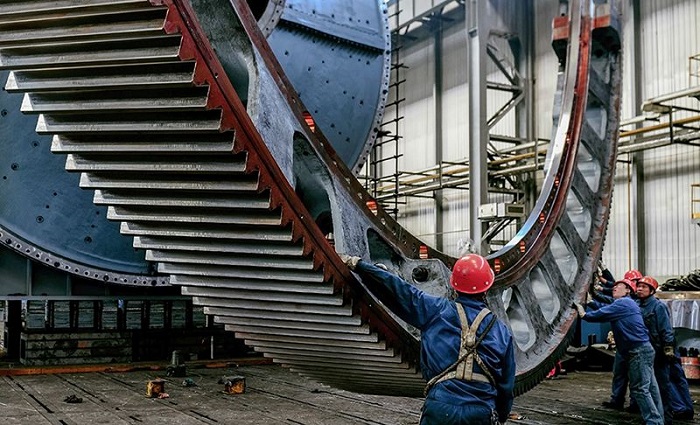
The disintegration and size reduction of ores in AG/SAG mills is brought about by a combination of impact, attrition and abrasion forces during mill rotation. Particles at the toe of the mill charge receive the maximum impact forces from falling rocks and other grinding media. Particles in the body of the mill charge partly slide from different heights and are subjected to attrition and abrasion resulting in size reduction.
The operation of AG/SAG mills therefore involves the use of cheaper grinding media as a replacement for expensive steel balls and rods which greatly affect the wear on liners. They are therefore less expensive to operate. It is necessary that the ore should provide a sufficient amount of lumps that would last for a reasonable time to act as the grinding medium. Such ores have been described as competent ores. Ores that break up easily are referred to as either non-competent or incompetent ore.
Structure of AG/SAG mill
Mills are designed with tapered conical ends (Fig.1) or square ends (Fig.2). High aspect mills with conical ends are sometime referred to as pancake mills while mills with square ends are called square mills. The diameters and lengths of square mills are nearly equal.
Most AG and SAG mills have slotted steel and rubber liners and are fitted with lifter bars. The liners are either waved or grid type. The grid liners are being increasingly used due to their longer life brought about by ore and balls being trapped in the grids. The trapped ores and balls build up a hard surface on the liners protecting them somewhat from wear. The present tendency is to use composite liners with lifters at the feed end of a mill to initiate impact crushing followed by wave liners along the rest of the length of the mill. Several combinations are constantly being tried to improve liner and shell life. The basic object of liner design is to promote comminution by impact and attrition instead of abrasion.
The discharge ends are fitted with slotted grates acting as a diaphragm, which holds back the larger particles from discharging into the product stream. The size, spacing and design of the holes in the diaphragm are important as they affect the rate of throughput and product size. Open-ended discharge helps to solve problems arising out of high-speed mill rotation in the region where the speed is in excess of 90% of the critical speed. To improve the efficiency of diaphragms at high speeds of rotation, curved lifters have been used. Three types of discharge ends are used, namely mills with wide peripheral discharge, mills having a scoop after the grate to lift the product and mills having the discharge through a trunnion.
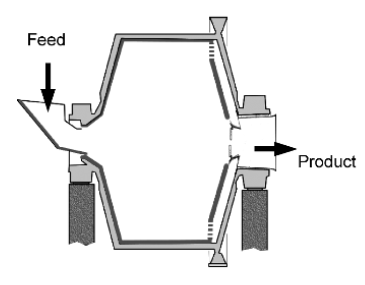
Fig1. High aspect ratio AG/SAG mill with grating and conical ends
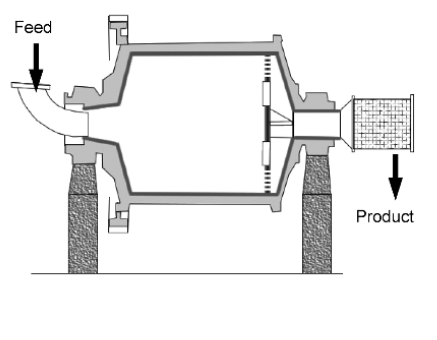
Fig2. Square AG/SAG mill with grating
AG/SAG mill circuit
In a mineral processing plant designing a crushing-grinding circuit, the concentration of the mineral in an ore and its down stream treatment is of prime importance. Equally important is the liberation size of the mineral, which determines the ultimate grind. The commonly used circuits for AG/SAG mills are:
1.open circuit with a trommel or screen as the classifier,
2.closed circuit with hydrocyclone classifier,
3.open circuit with closed circuit ball mill, and
4.open circuit followed by a secondary cone crusher and then ball milling.
The first two types may be called single stage operation while the last two are two-stage operations. Most AG/SAG mills operate in open circuit (Fig.3) when the product size is usually coarse. Usually provision exists for installing a classifier like a straight screen, a trommel or a curved DSM screen to remove critical sized pebbles (scats). For finer and more uniform product, closed circuit grinding with classifiers, like a hydrocyclone, is usually employed (Fig.4).
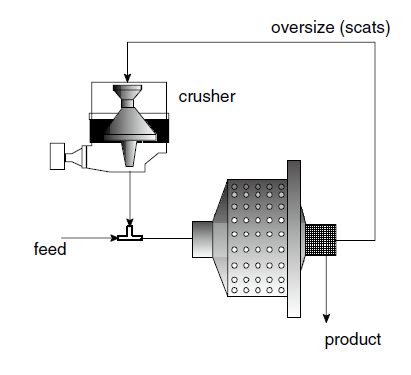
Fig3. SAG mill circuit in open circuit
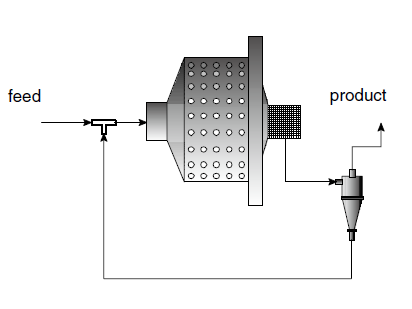
Fig4. SAG mill in closed circuit
A two stage close circuit-grinding set-up with hydrocyclone is shown inFig.5
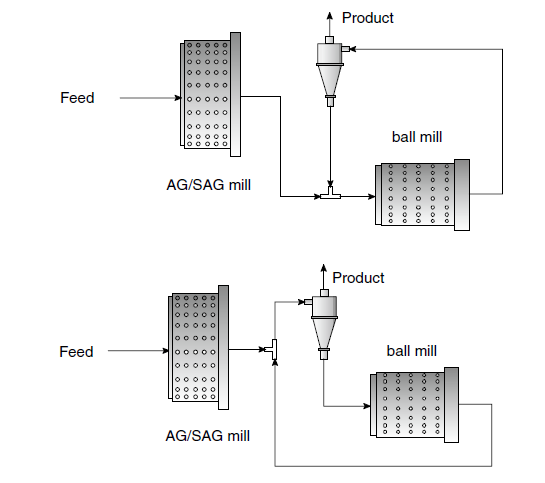
Fig5. Two stage autogenous - ball mill circuits
The main problem in designing and operating an AG/SAG circuit is the tendency to build up the 25 -50 mm fraction of the charge which hampers throughput. This specific size fraction that builds up in the mill is referred to as the critical size. Therefore pre-treatment of the feed should be such that the presence of this fraction is minimal. If the build up of critical sized pebbles is too great 50 - 90 mm slots are cut into the grate (pebble ports) to allow the scats to discharge from the mill. These scats are crushed before returning to the SAG mill or passing onto a ball mill in an ABC (Autogenous/Ball mill/Crusher) circuit (Fig.6).
Instead of recycling the larger size fraction, the oversize product from AG/SAG mills is sometimes prevented from discharging from the mill by using a reverse spiral at the discharge end and washes back into the mill for further grinding .
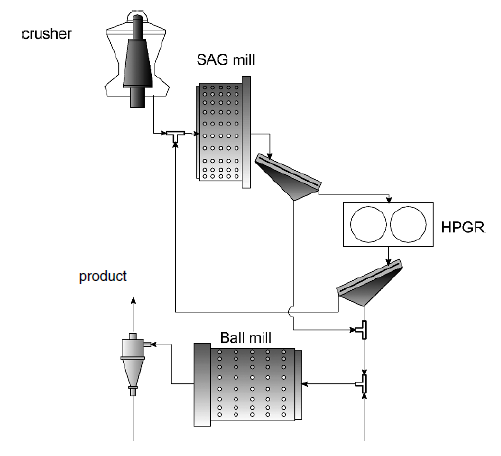
Fig6. SAG mill, HPGR and ball mill in an ABC closed circuit
Low aspect mills are best suited to low to medium competent ores while high aspect mills are more commonly used for competent ores either as single stage circuits or autogenous-ball mill two stage circuits. The larger diameter and short length provides better impact breakage for the competent ore.